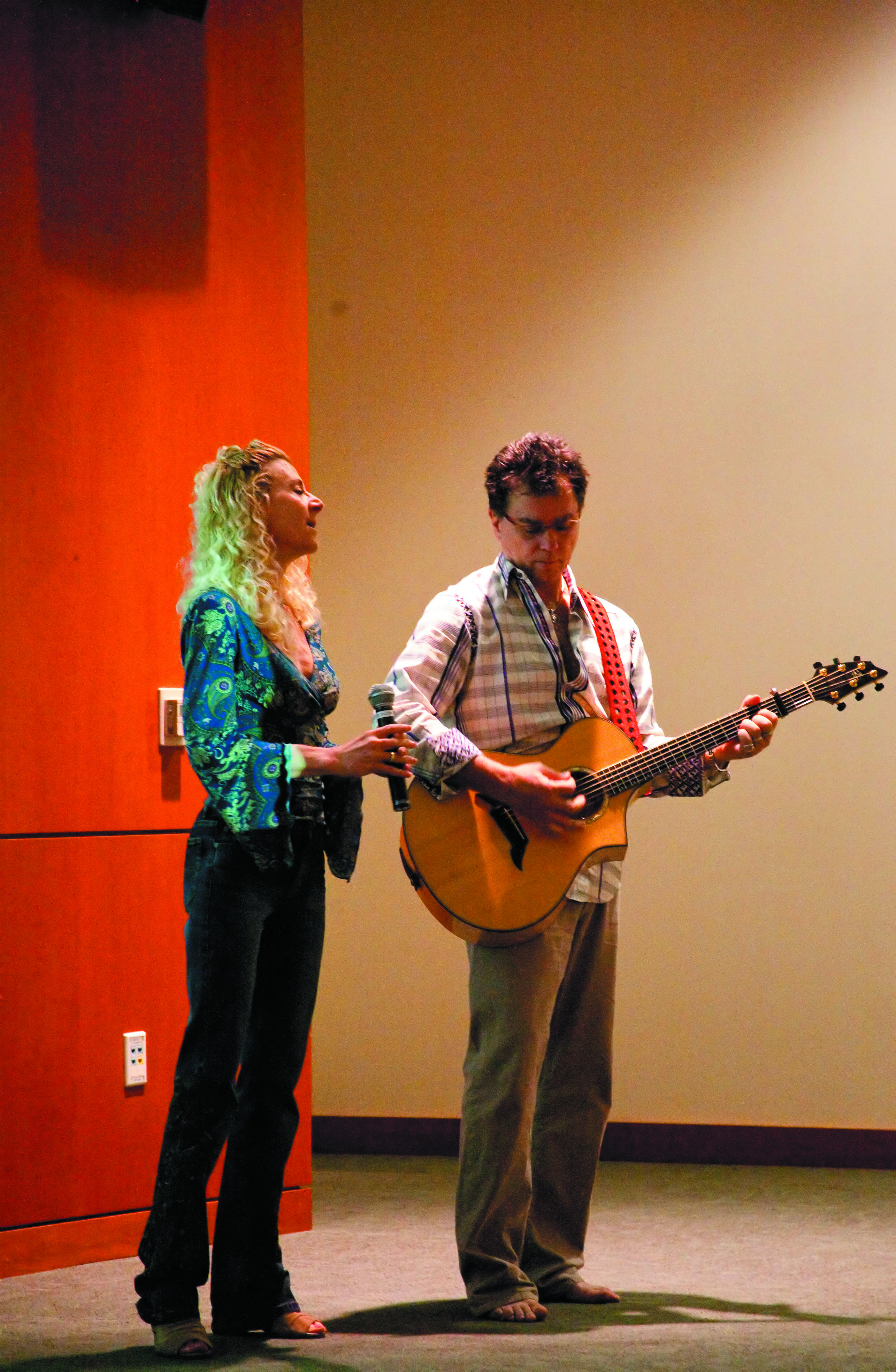Mindful Awareness Research Center event explores neuroscience behind creativity through meditation, song

Jahna and Michael Perricone perform Leonard Cohen’s “Hallelujah” during a workshop on mindfulness, neuroscience and creativity on Saturday morning.
About 40 people sat calmly with their eyes closed, letting their thoughts drift and their minds settle on the present moment.
In a quiet, steady voice, Diana Winston guided the group into a mode of relaxation.
“Try to soften your stomach,” Winston, director of mindfulness education at the Mindful Awareness Research Center, gently instructed them.
The communal meditation initiated an event about the relationship between creativity, the brain and mental awareness in the Neuroscience Research Building auditorium on Saturday.
“Mindfulness, Neuroscience and Creativity: An Interactive Exploration” was the first workshop of the summer and cost $50 to participate. In addition to classes and daylong programs, a full mindfulness course is also being offered through the center this summer.
Speakers at Saturday’s event included a meditation teacher, a yoga instructor, musicians and a neuroscience and creativity researcher from UCLA. Winston said she aimed to demonstrate three different ways of learning through the speakers. By teaching attendees about the neuroscience behind creativity, the conference addressed the cognitive aspect while including the experiential aspect of learning through participation in meditation, Winston said.
The final aspect of learning, a reaction to creativity, was also incorporated when the audience was sung to and asked to participate in the singing, she said.
Robert Bilder, an endowed chair at the Semel Institute for Neuroscience and Human Behavior, spoke on the neuroscience behind creativity at the event. To foster innovations, people need to inhibit habits and go beyond the first things that come to mind, Bilder said.
Winston said organizers were fortunate to have a researcher like Bilder speak. She added that the research around creativity is still in its early stages but shows a lot of promise.
Many of the attendees were musicians, writers and artists seeking new ways to explore their creativity. Specifically designed to address creativity, one of the meditation exercises led by Winston featured a performance on Tibetan singing bowls by artist Michael Perricone.
Sitting barefoot on a cushion, Perricone made music by slowly drawing a suede mallet around the outside of various bowls, which made them vibrate and emit a gentle pitched hum that floated into the air and lasted long after he stopped touching the bowl.
After the meditation, one artist participant said the experience was an enhanced silence, much like the environment she needs for her creativity while working.
Perricone said that because his musical performance is based on intuition, it enhances the creative process.
“It’s present, but not interfering,” Perricone said.


